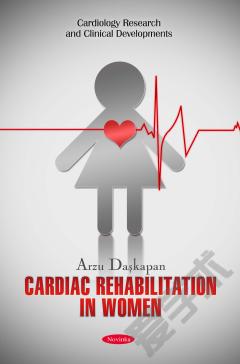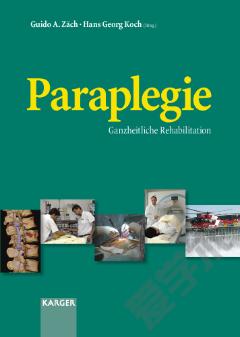The Rehabilitation of Partner-Violent Men
About the Author. Acknowledgements. 1. Introduction. The Nature of 'Domestic' or 'Intimate Partner' Violence. Official definitions. Academic definitions and debates. Are men the only perpetrators? A typology of domestic violence. The Extent of Intimate Partner Violence. International and national surveys. British surveys. Who Are 'Those Guys?' The Impact of Intimate Partner Violence: The Reason to Intervene. Rehabilitation and Intimate Partner Violence. Conclusion. 2. Changes to the Criminal Justice Response to Partner Violence. Attrition in the Prosecution of Partner Violence Cases. Policing partner violence. Prosecuting partner violence. Factors influencing victim support of prosecution. Summary. A Changing National Policy Context. Partner Violence within the Criminal Law. Changes to criminal law. Changes to the policing of partner violence. Changes to Crown Prosecution Service (CPS) policy. Changes to sentencing guidelines. Changes to the Court System. Specialist domestic violence courts (SDVCs). Summary. So Have These Changes Improved the Response to Partner Violence in the UK? The impact on reporting incidents of partner violence. The impact on policing. The effects of CPS policy and specialist domestic violence courts. The Overall Impact on Attrition. Conclusion. 3. Theories of Intimate Partner Violence. Socio-Cultural Theories. Gender roles and inequality. Power and control. Patriarchy. Criticisms of Socio-Cultural Theories. Social Learning Theory. Family Systems Theory. Attachment Theory. Personality Disorder and IPV. Anger and Hostility Models of IPV. Alcohol and Drug Models of IPV. Summary of single factor theories of IPV. Nested Ecological Theory 69 Summary and Conclusions. 4. The Development of Group-Based Programmes for Male Domestic Violence Perpetrators. Changing Perspectives on the Causes of IPV and Approaches to Intervention. The Inception of Men's Programmes. 'Nothing Works'. The Expansion of Men's Programmes. The Duluth model: a change of emphasis. Evidence that Something Works. British Developments in the Provision of Men's Programmes. 'What Works?' and the Move Towards Accredited Programmes. Accreditation criteria. The 'What Works' Movement and Domestic Violence Perpetrator Programmes. Conclusion . 5. Current Practice: The Risk Assessment and Management Context. The Multi-Agency Risk Management Context: MAPPAs and MARACs. Multi-agency public protection arrangements (MAPPA). Multi-agency risk assessment conferences (MARACs). The intersection of MAPPA and MARAC. Risk and Risk Assessment. The nature of IPV risk. Risk factors for non-lethal IPV. Risk factors for lethal IPV. Current Approaches to IPV Risk Assessment. Actuarial IPV risk assessments. Alternative approaches. Post-treatment risk appraisal. 6. Current Practice: Programmes for Partner-Violent Men. Overview of IDAP . Programme eligibility criteria. Programme content. Additional sessions. Overview of CDVP and the Moderate Intensity Healthy Relationships Programme. Programme eligibility criteria. Programme content. Additional sessions. Overview of the High Intensity Healthy Relationship Programme. Critique of the Programme Theories. How Do the Programmes Differ? The Empirical Validity of Treatment Targets. Cognition: Denial, minimization, victim blaming and cognitive distortions. Perspective taking and empathy. Parenting. International Practice. North America. Canada. European practice. Global practice. Summary and Conclusions. 7. The Effectiveness of Programmes: Issues in Programme Evaluation. Why Evaluate? Which Evaluation Questions should be Asked? What should be Evaluated? What Research Design should be Used? Experimental design. Quasi-experimental designs. Propensity scores. Alternative designs. What Methods should be Used? Domestic violence reconviction. Domestic violence reoffending. Domestic violence recidivism. What is Good Practice in IPV Programme Evaluation? 8. The Effectiveness of IPV Programmes: International and National Evidence. International Evaluation Studies. Review overview. Meta-analytic studies of programme effectiveness. Conclusions from meta-analyses. British Studies. CHANGE and LDVPP. The domestic abuse intervention project (DAIP). The Cheshire domestic violence prevention programme (CDVPP). The West Midlands Probation domestic violence perpetrator programme (WMDVPP). The integrated domestic abuse programme (IDAP). Emergent Themes from the British Evaluation Evidence. Summary. 9. Evaluation Issues: What Else should We be Considering? The Comprehensive Evaluation Approach. Needs Assessment: What is Domestic Violence and Who are the Perpetrators? Assessing Programme Theory. Validating programme theory: Do programmes target criminogenic need? Implicit assumptions of programme theory: Do all members of the target population have the same needs? Motivation to change: selection criteria or treatment target? Assessing Programme Process: Is the Intended Treatment Delivered? Programme integrity. Therapeutic environment. Group variables. Leader variables. Programme Outcome. Programme Efficiency. Conclusion. 10. Conclusions and Future Directions. The Future Understanding of IPV: A Move towards an Evidence-Based Definition. The Future of Programme Development: What are the Alternatives? The Future of Evaluation Research. Does the Future Lie in Tertiary Interventions? References. Index.
{{comment.content}}








 京公网安备 11010802027623号
京公网安备 11010802027623号